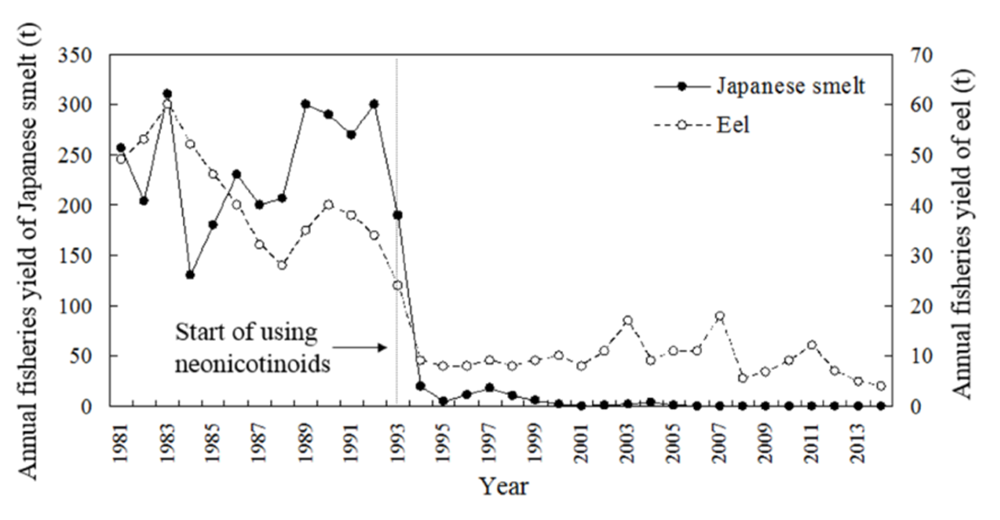Neonicotinoids are suspected to decrease fisheries yield of eels and smelts
- Surveys in Lake Shinji showed the catch of eel sharply dropped just after the use of neonicotinoids -
Summary of AIST Press Release November 1, 2019
>>Japanese
Masumi Yamamuro (Institute of Geology and Geoinformation, GSJ, AIST and Graduate School of Frontier Science, the University of Tokyo) et al. have conducted geochemical surveys in Lake Shinji, a brackish lake in Shimane Prefecture, western Japan to study the relation between long term changes in the population of aquatic life and environment. Comparing the recent results with those obtained from the past surveys, they found that the decrease of the fishery yields of eel and smelt coincided with the application of the neonicotinoids use. They concluded that the insecticides application caused the decrease of zooplankton and midge larvae, which are the main diet for eel and smelt, leading to the sharp drop of the population of upper level predators. This study is the world’s first report about the effect of neonicotinoids on the aquatic life, verifying the indirect impact of neonicotinoids sprayed over rice paddies. The authors insist on the importance of assessing the impact of toxic material in brackish water areas which play important role for the life and ecosystems both in freshwater and marine.
This study was published on November 1, 2019 as below:
Yamamuro, M., Komuro, T., Kamiya, H., Kato, T., Hasegawa, H. & Kameda, Y. (2019) Neonicotinoids disrupt aquatic food webs and decrease fishery yields. Science, 366, 620–623.
Fig. 1. Annual yield (t) of Japanese smelt and eel in Lake Shinji from 1981 to 2014.
The vertical dashed line indicates when neonicotinoid use began in the lake’s watershed.


